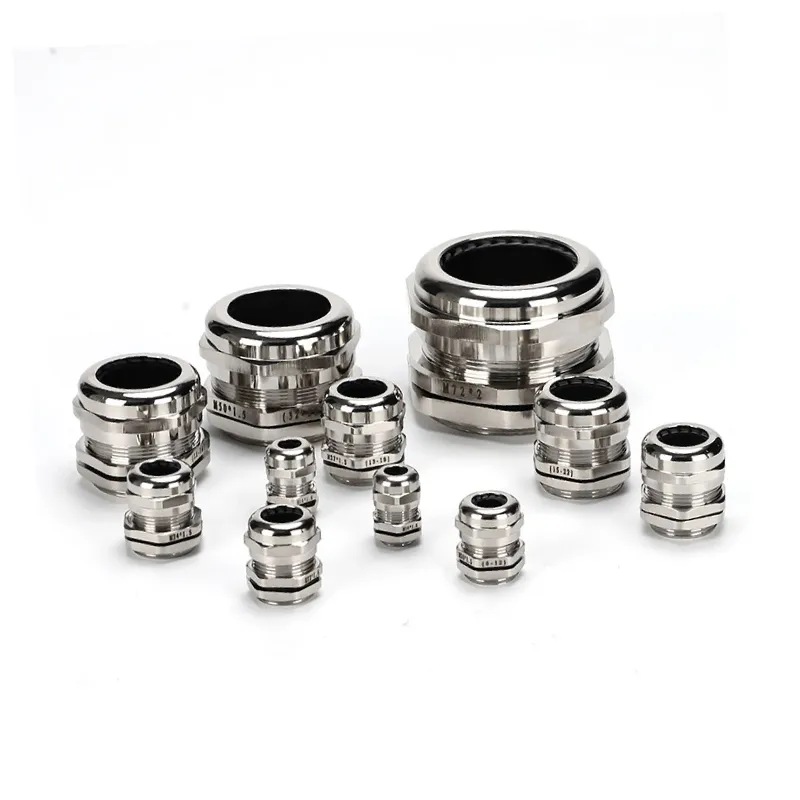Metallkaablifiltrite tootmine kujutab endast keerukat metallurgilise oskusteabe, täppistehnika ja range kvaliteedi tagamise koostoimimist. Need kriitilised komponendid, mis on mõeldud elektriliste ühenduste kindlustamiseks ja kaitsmiseks erinevates tööstusharudes alates lennundusest kuni avamereenergiani, läbivad hoolikalt korraldatud tootmisprotsessi. Käesolevas aruandes on sünteesitud tööstustavade, tehniliste spetsifikatsioonide ja materjaliteaduse teadmised, et kirjeldada kaablifiltrite tootmise aluseks olevat keerukat protsessiahelat.
Vundamendikonstruktsioon ja materjalide valik
Arvutuslik projekteerimise integreerimine
Tootmisprotsess algab täiustatud arvutusliku modelleerimisega, kus 3D-CAD-tarkvara genereerib täpsed spetsifikatsioonid, mis arvestavad mehaanilisi koormusi, soojuspaisumise koefitsiente ja elektromagnetilisi häireprofiile. Insenerid integreerivad lõplike elementide analüüsi (FEA), et simuleerida pingete jaotumist komponentide vahel kasutustingimustes, optimeerides geomeetriat nii, et roostevabast terasest variantide tõmbetugevus ületaks 500 MPa.
Materjali valik
Materjalide valik mängib olulist rolli:
- Messingisulamid (CuZn39Pb3): Kasutatakse üldistes rakendustes tänu heale töödeldavusele, korrosioonikindlusele ja nikeldamise tõttu pikemale kasutusajale.
- Austeniitilised roostevabad terased (AISI 303/316L): Eelistatud mere- ja kemikaalikeskkondades, pakkudes suurepärast vastupidavust punktsioonile.
- Alumiiniumsulamid (6061-T6): Sobib ideaalselt lennundus- ja autotööstusrakenduste jaoks tänu optimaalsele tugevuse ja kaalu suhtele.
Spetsifikatsioonid järgivad standardeid, nagu BS EN 62444 kaabli kinnipidamisjõudude ja IP68 kaitseprotokollide kohta, mis on kinnitatud arvutusliku vedeliku dünaamika (CFD) mudelite abil.
Täppistootmistehnikad
Metallurgiline töötlemine
Protsess algab valamise või sepistamise meetoditega:
- Investeerimisvalu: Toetab keerukaid geomeetriaid mõõtmete tolerantsidega ±0,15 mm ja sisaldab valamisjärgset kuumtöötlust struktuurilise stabiilsuse tagamiseks.
- Kuumvormimine: Parandab 40% väsimuskindlust võrreldes mehaanilise töötlemisega läbi teravoolu joondamise.
CNC-töötlemisoperatsioonid
Mitmeteljeline CNC-töötlus tagab täpsuse, sealhulgas:
- Pööramine: Keermed on töödeldud pinnatöötlusega Ra ≤1,6 μm ja hooldatud vastavalt täpsetele ISO 68-1 spetsifikatsioonidele.
- Freesimine: Võimaldab kontuurid vibratsioonivastaste äärikute ja nendega seotud komponentide jaoks.
- Puurimine / puurimine: Säilitab kaabli läbipääsu risti 0,02 mm/mm piires ja moodustab sisekeermed.
Töötlusjärgne abrasiivne voolutöötlus (AFM) eemaldab mikrojämedused, tagades IP68-tiheduse.
Kokkupanek ja tihendussüsteemi integreerimine
Mitmeetapilised koosteprotokollid
Komponentide integreerimine järgib täpseid protokolle:
- Tihendi paigaldamine: Fluorsilikoonist O-rõngad, mis on press-fit, mille pindmise rõhu väärtus on üle 3,5 MPa.
- Soomuse kinnitus: Külmalt sepistatud messingist trossid tagavad tõmbekindluse, mis ületab 1,5 kN.
- Pöördemomenti piirav koost: Pneumaatilised ajamid rakendavad kontrollitud pöördemomenti (12-35 Nm), vältides samal ajal ülerõhkumist.
Täiustatud topelttihendusmehhanismid tagavad katsetamise ajal heeliumilekke kiiruse < 1×10-⁶ mbar-L/s.
Kvaliteedi tagamine ja tulemuslikkuse valideerimine
Metroloogiline kontroll
Kriitilisi mõõtmeid kontrollitakse laserskaneerimispeadega CMM-i abil. Keermete kontsentrilisust, Go/No-Go mõõtmete vastavust ja muid peeneid tolerantse kontrollitakse hoolikalt.
Keskkonnaalane stressitestimine
Partiide proovivõtu läbib rangeid teste, sealhulgas:
- Termiline tsüklilisus: -40°C kuni +150°C 250 tsükli jooksul, et jälgida tihendi kokkusurumise seadistumist.
- Soolapritside testimine: Tagab roostevabast terasest passiveerimise vastavalt ASTM B117 standarditele.
- Vibratsiooni katsetamine: Kinnitab vastupidavust juhusliku vibratsiooniprofiili korral (MIL-STD-810G).
Elektrokeemiline impedantsspektroskoopia (EIS) takistab messingist komponentide vastuvõtlikkust tsingi eemaldamisele.
Jätkusuutlikud tootmisuuendused
Suletud materjalisüsteemid
Jätkusuutlikkuse tavad hõlmavad:
- Messingipuru taaskasutamine kuni 98% materjali taaskasutamiseks.
- Veepõhise nikeldamise kasutamine ohtlike jäätmete vähendamiseks.
Energiatõhusad protsessid
- Impulssgalvaaniline galvaaniline katmine: Vähendab energiakulu 40% võrra, tagades samas ühtlase katte.
- Regeneratiivsed termilised oksüdeerijad: VOC-heitmete vähendamiseks võetakse ära ja taaskasutatakse valutöödel tekkivat soojust.
Kokkuvõte
Metallkaablifiltrite valmistamine kujutab endast traditsioonilise metallurgia ja tööstuse 4.0 tehnoloogiate lähenemist. Alates arvutuslikust modelleerimisest kuni säästvate tootmisalgatusteni rõhutatakse igas etapis täpsust ja keskkonnahoidlikkust. Tööstuslike nõudmiste arenedes leiavad tootjad uuendusi selliste materjalide, nagu grafeeniga legeeritud komposiitmaterjalid ja liituvate tootmistehnoloogiate abil, tagades nende oluliste komponentide jätkuva asjakohasuse ülemaailmses elektrifitseerimisinfrastruktuuris.



